Most beginners interested in hydroponics may find themselves intrigued by the Deep Water Culture (DWC) system. This method allows plants to thrive in a nutrient-rich solution, suspended in water, ensuring they receive ample oxygen and nutrients. He or she will discover that DWC can lead to faster growth rates and higher yields compared to traditional soil methods. However, they must also be cautious, as improper management can cause root rot and other challenges. This guide aims to empower new growers with the knowledge to navigate DWC successfully.
Key Takeaways:
- Deep Water Culture (DWC) hydroponics involves suspending plant roots in nutrient-rich water, promoting rapid growth and higher yields.
- This method requires an air pump and air stones to provide oxygen to the roots, preventing root rot and ensuring healthy plant development.
- DWC systems can be set up in various scales— from small home gardens to larger commercial operations— making it versatile for different users.
- Regular monitoring of water temperature, pH levels, and nutrient concentrations is vital for maintaining optimal growing conditions.
- Starting with fast-growing plants like lettuce and herbs can help beginners quickly see results and build confidence in their hydroponic skills.
The Science of Root Immersion: How Deep Water Culture Works
The Role of Nutrient Solutions
Nutrient solutions serve as the lifeblood for plants grown in Deep Water Culture (DWC) systems. This method relies on a tailored mix of imperative macro and micronutrients dissolved in water, delivering key elements like nitrogen, phosphorus, potassium, calcium, and magnesium directly to the plant roots. These solutions are typically enriched with trace elements—including iron, manganese, and zinc—that are vital for healthy plant growth. The nutritional composition can be adjusted based on the specific needs of different crops, enabling growers to optimize their yields.
In a DWC setup, nutrient solutions are continuously circulated around the roots, ensuring that plants have constant access to the nutrients they require. Growers often monitor the pH and electrical conductivity (EC) of the solution, as these factors significantly influence nutrient absorption. A well-balanced nutrient solution ensures that plants not only thrive but also develop robust root systems capable of supporting healthy growth above ground.
Oxygenation: The Key to Healthy Roots
Healthy roots demand an ample supply of oxygen to thrive, making oxygenation an imperative component of Deep Water Culture systems. While roots primarily absorb water and nutrients from the solution, they also require oxygen to facilitate cellular respiration. This process supports energy production, leading to stronger root development and overall plant vigor. In DWC systems, growers employ air pumps, air stones, or diffusers to introduce oxygen into the nutrient solution, creating a well-aerated environment conducive to root health.
Oxygen levels in the water directly impact root longevity and function; studies have shown that maintaining dissolved oxygen levels above 5 parts per million (ppm) can significantly enhance plant growth. Furthermore, under-oxygenated roots are more susceptible to diseases, such as root rot, which can devastate an entire crop. Consequently, ensuring a steady supply of oxygen to the roots is not just beneficial—it is a fundamental aspect of thriving hydroponic systems.
For growers, a balance between nutrient delivery and oxygen levels is imperative. Utilizing tools like dissolved oxygen meters can help them gauge the efficiency of their aeration practices, making adjustments as needed to support the optimal health of the root zone. When roots receive sufficient oxygen alongside a quality nutrient solution, plants become more resilient, productive, and better able to overcome environmental stresses.
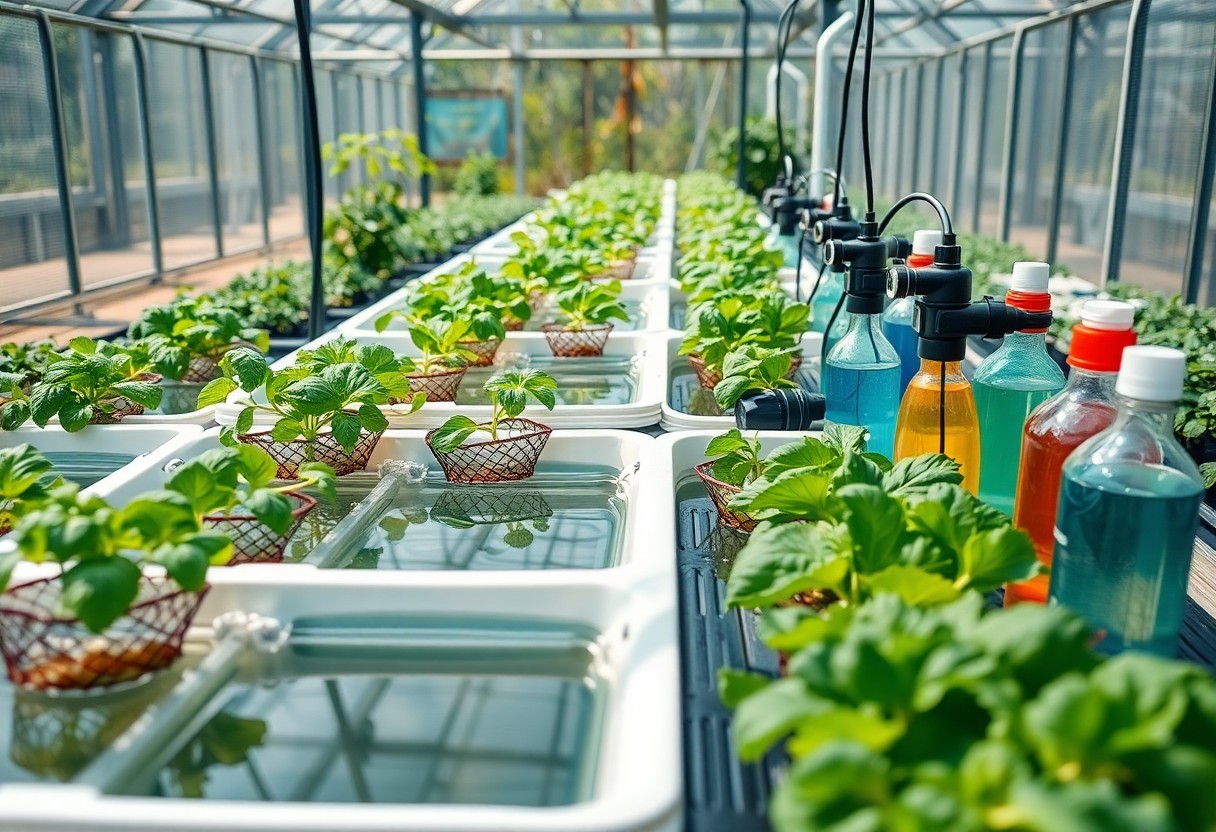
Choosing Your Deep Water Culture System
Essential Components of a DWC Setup
Each Deep Water Culture (DWC) system requires specific components that work together to create an optimal growing environment. At the center of the setup, he or she will need a sturdy container that holds the nutrient solution, typically made from food-grade plastic. This container must be opaque to prevent light penetration, which can encourage algae growth and negatively affect the nutrient solution. Additionally, a high-quality air pump and air stones are necessary to provide oxygen to the roots. The oxygenation process is vital for preventing root rot and ensuring plants thrive in an otherwise submerged environment.
Net pots are important for holding the plants and allowing their roots to dangle freely into the nutrient solution. He or she should also consider a pH meter and EC (electrical conductivity) meter to monitor the nutritional balance in the water. Regular testing of pH and nutrient levels supports healthy plant growth and makes adjustments easier if issues arise.
Variations in DWC Systems: From Buckets to Rafts
There are numerous configurations for DWC systems, each with its advantages depending on the grower’s needs and available space. Simple reservoir buckets, for instance, can accommodate individual plants in separate containers. This method allows for easy management of specific nutrient levels for each plant type. On the other hand, raft systems involve a floating platform that supports multiple plants in a shared nutrient solution, which efficiently maximizes space and can yield larger harvests. Both systems function under the same principles but cater to different aesthetic and practical preferences.
Additional variations include larger-scale systems like commercial DWC setups that employ manifold configurations, where several buckets or rafts are interconnected for streamlined nutrient delivery. Consequently, he or she may opt for automated systems featuring advanced controls for temperature, pH balance, and nutrient levels, which significantly reduce the hands-on effort required for maintenance.
Moreover, he or she might find that each design has specific material demands and complexity levels, making certain systems more suited for beginners, while others cater to more experienced growers. For example, a simple bucket system with minimal plumbing may be ideal for those just getting started with hydroponics, while a raft system could provide the high output sought after by seasoned growers looking to expand their production capabilities.
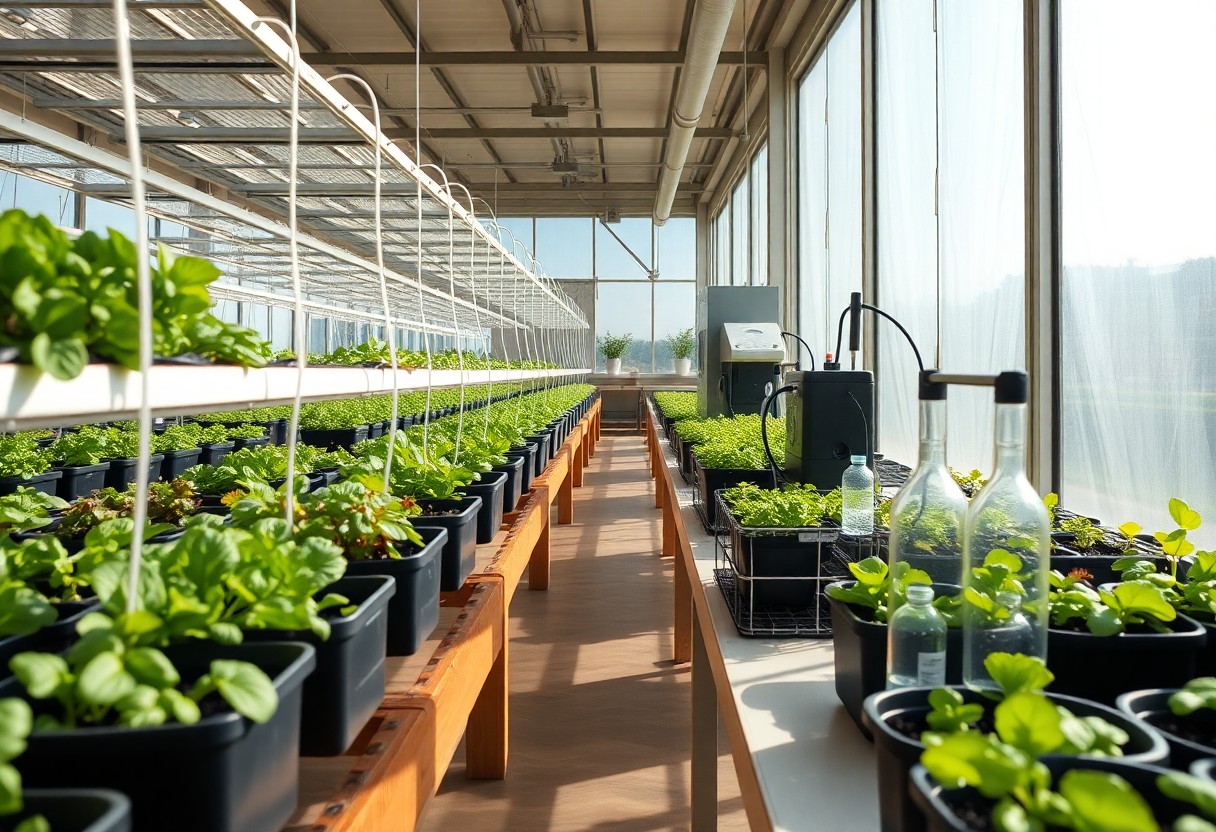
Selecting the Right Plants for Deep Water Culture
Best Plant Choices for Beginners
In Deep Water Culture (DWC) systems, some plants thrive better than others, particularly for those new to hydroponics. Leafy greens such as lettuce, kale, and spinach are highly recommended as they grow quickly, require less light, and have shorter growth cycles. These plants often flourish in nutrient-rich water, enabling beginners to see results in as little as 30 days. Herbs like basil, cilantro, and mint also perform well in DWC systems. They tend to adapt easily and can grow rapidly with minimal fuss, making them perfect for novice gardeners eager to experience the fruits of their labor. Heirloom varieties of these greens and herbs can offer added flavor and diversity, allowing a beginner to enjoy an expanded range of culinary options. Additionally, strawberries are another great choice, providing the excitement of growing fruit without demanding an excessively complicated setup. DWC systems can often accommodate a variety of cultivars, offering budding hydroponic growers the chance to experiment and learn as they refine their skills.Growth Rate and Yield Expectations
Understanding growth rates and yield expectations for plants grown in DWC systems is vital for gauging success. Typically, greens can be harvested within 4 to 6 weeks of planting, with yields significantly higher than in traditional soil-based methods. For example, a well-maintained DWC system can yield 2 to 3 times more lettuce than conventional gardening in the same amount of space. Furthermore, basil can grow to a harvestable size in as little as 3 weeks, allowing growers to consistently enjoy fresh herbs. Yields also depend on environmental conditions such as light exposure, nutrient concentration, and overall system maintenance. Consistent monitoring of these variables can lead to maximized outputs. For instance, plants like kale may produce anywhere from 1 to 2 pounds per square foot each month under optimal conditions, appealing to those who aim for bountiful results in a limited space. With proper attention and the right choices, beginners can expect a rewarding experience as they research into the world of DWC hydroponics.Nutrient Management: Feeding Your Hydroponic Garden
Understanding Nutrient Solutions
In Deep Water Culture hydroponics, the absence of soil means that nutrient management plays a critical role in plant growth and development. Nutrient solutions are composed of a mix of water-soluble fertilizers containing vital macro and micronutrients. Key elements such as nitrogen, phosphorus, and potassium (N-P-K) provide the foundation for strong plant health, while micronutrients like iron, magnesium, and calcium support photosynthesis, energy transfer, and overall vitality. When preparing these solutions, it’s beneficial to follow a specific ratio, typically recommended by the manufacturer or established by growers, to ensure optimal nutrient absorption.
Gradually increasing nutrient concentration could also enhance plant performance as they mature. Monitoring feeding schedules is vital because over-fertilization can lead to nutrient burn or toxicity, while under-fertilization can stunt growth. Growers often start with a diluted nutrient solution and then adjust based on plant response, ensuring a feedback loop that fine-tunes the nutrients to meet the plants’ evolving demands.
Balancing pH Levels for Optimal Growth
The pH level of a hydroponic system is as significant as the nutrients provided. For most crops, he or she would want to maintain a pH range between 5.5 and 6.5, as this range allows optimal nutrient availability and uptake by the plants. Below this threshold, the availability of nutrients like phosphorus may diminish, while above this range, vital elements like iron could become less accessible, leading to deficiencies and impaired growth. Regularly testing the pH level using pH meters or test kits ensures that adjustments can be made promptly.
Adjusting pH levels can be achieved through the use of pH up and pH down solutions, which modify the acidity or alkalinity of the nutrient solution. Simple additions of household items like baking soda can raise pH, while vinegar or citric acid can effectively lower it. Frequent testing, coupled with consistent monitoring of nutrient solutions, allows hobbyists to maintain balance and promote healthy plant growth throughout the hydroponic cycle.
Balancing pH also involves understanding the chemistry of the water used in the system, as different sources may have varying levels of acidity. Tap water could fluctuate in pH due to the presence of chlorine or other conditioning agents, while distilled or reverse osmosis water generally has a neutral pH. Growers should account for these variables when formulating their nutrient solutions to enable a smoother transition to their desired pH range, ensuring that all plants receive the best possible conditions for flourishing development.
Common Pitfalls and How to Avoid Them
Preventing Root Rot and Disease
Root rot, primarily caused by over-saturation and poor oxygen flow, is one of the most significant challenges in Deep Water Culture (DWC) systems. He must ensure that the system is well-oxygenated, as the roots thrive in a balanced environment where they can access adequate oxygen levels. Hydroponic operators should consider incorporating air stones or pumps into their design to distribute oxygen evenly throughout the nutrient solution. Regularly monitoring the pH and electrical conductivity levels also plays a vital role in preventing disease, as imbalanced nutrient levels can stress the plants and make them susceptible to pathogens.
Implementing a simple routine can yield remarkable results. He should visually inspect the roots weekly, looking for signs of discoloration or foul odors that indicate decay. When identifying early warning signs, he can act quickly by adjusting the nutrient solution’s composition or replacing the solution entirely. Maintaining a clean reservoir is imperative in preventing contamination, with regular cleaning schedules recommended to keep disease at bay.
Light and Temperature Considerations
The quality of light and temperature control directly affects plant growth within a DWC system. He must ensure that plants receive sufficient light intensity, ideally ranging between 400 to 800 µmol/m²/s for photosynthesis. Any variations can lead to stunted growth or inadequate flowering. If using artificial lights, LED grow lights are advisable due to their efficiency, spectrum adjustment, and lower heat output. For vegetative stages, keeping lights on for around 16 to 18 hours daily can optimize growth, while a reduction to 12 hours might be beneficial during blooming.
Temperature regulation is equally critical; optimal water temperatures range from 18-22°C (65-72°F). Heating mats or chillers can help maintain these conditions, preventing heat stress or cold shock. He should also be cautious of excessive ambient temperatures, particularly when using high-intensity lighting, as they can elevate water temperatures. A stable environment contributes significantly to the health and productivity of the plants.
| Light Conditions | Recommendation |
|---|---|
| Intensity | 400 – 800 µmol/m²/s |
| Duration (vegetative stage) | 16-18 hours/day |
| Duration (blooming stage) | 12 hours/day |
Temperature also plays a significant role in managing the nutrient uptake of plants in DWC systems. He should consider the effects of varying water temperatures, as colder water can slow down metabolism while warmer temperatures can enhance growth rates. Above 24°C (75°F), some plants may start to exhibit stress symptoms, which includes wilting or leaf drop. The interplay between light intensity and temperature is imperative; for example, high light levels paired with elevated water temperatures can lead to rapid drying of nutrients. Careful balance and management will result in healthier plants and bountiful yields.
| Temperature Conditions | Recommendation |
|---|---|
| Optimal Water Temperature | 18-22°C (65-72°F) |
| Avoid >24°C (75°F) | Monitor continuously |
The Maintenance Game: Ensuring Long-Term Success
Regular Checks: What to Monitor and When
Successful Deep Water Culture hydroponics hinges on consistent monitoring and timely interventions. A seasoned grower regularly checks pH levels, ideally targeting a range of 5.5 to 6.5, to ensure nutrient availability and plant health. Water temperature also plays a pivotal role; it should typically remain between 18°C and 22°C (64°F to 72°F) to prevent root stress and promote optimal nutrient uptake. Conducting these checks on a weekly basis allows for early detection of issues that could derail the entire system.
Additionally, nutrient levels should be scrutinized regularly, aiming to maintain the appropriate concentration for the specific plants being cultivated. Conducting a thorough nutrient solution replacement every 2 to 3 weeks helps rejuvenate the system and prevents nutrient lockout. This timing ensures that plants receive a balanced diet, minimizing the chances of deficiency or excess.
Troubleshooting Common Issues
Even with meticulous management, challenges can arise in a DWC setup. One common issue growers face is root rot, typically caused by overly warm water temperatures and inadequate aeration. Symptoms include wilting plants and dark, mushy roots. By maintaining water temperatures within the optimal range and using a quality air pump, this risk can be significantly reduced. Another frequent problem is nutrient deficiencies, manifesting as yellowing leaves or stunted growth. Regular monitoring of nutrient levels and adjusting as needed can help avert these issues.
Algae growth also presents a challenge, often thriving in poorly light-controlled environments. It can compete with plants for nutrients and oxygen, potentially leading to stunted growth. To mitigate this, growers should ensure that reservoir tanks are opaque to limit light penetration and regularly check the system for any signs of excess algae buildup.
Common troubleshooting issues in Deep Water Culture can often be preemptively managed by cultivating a keen awareness of plant indicators. For instance, nutrient deficiencies can be efficiently addressed by knowing which specific nutrient deficiencies align with particular symptoms. Additionally, understanding the environmental conditions and being vigilant about changes in water quality can foster a proactive approach to managing root health. By staying informed and proactive, they can quickly rectify issues before they escalate, ensuring their hydroponic systems run smoothly.
Maximizing Yield: Tips and Tricks from Seasoned Growers
With respect to achieving maximum yield in Deep Water Culture hydroponics, seasoned growers often utilize a variety of strategies to enhance plant health and productivity. These can range from understanding nutrient requirements to creating optimal environmental conditions.- Emphasizing the importance of nutrient timing can lead to increased growth rates.
- Regularly monitoring pH levels and adjusting them as needed can help avoid nutrient lockout.
- Employing LED grow lights can significantly boost photosynthesis compared to traditional lighting.
- Making use of air stones can improve oxygenation, which is imperative for root health.
- Implementing auto-top off systems for nutrient solutions can maintain optimal levels without constant manual adjustments.
The Art of Pruning and Training Plants
She often emphasizes the significance of strategic training methods, such as Low Stress Training (LST), to encourage sprawling growth rather than vertical stretching. This technique can lead to more bud sites developing at once, which translates into a greater yield. Additionally, supporting branches with trellises or stakes can prevent the plants from toppling over, particularly once they start to fruit. He also notes that consistent pruning not only limits disease susceptibility by improving airflow but also directs the plant’s energy towards producing fruit rather than maintaining excessive foliage. This targeted growth can yield healthier and more nutrient-dense plants.Utilizing Technology: Monitoring Systems and Apps
A wealth of technological tools is available to hydroponic growers, making it easier to monitor and adjust conditions for optimum growth. Automated systems can track variables such as temperature, humidity, and nutrient concentrations, providing real-time data that allows them to react promptly if issues arise. Using apps for smartphone integration enables growers to receive alerts or make adjustments from anywhere, maximizing control over their environment. Investing in advanced monitoring systems also allows for the collection of detailed growth data that can be analyzed for better decision-making over time. By tracking patterns in growth and yield in relation to adjustments made, growers can fine-tune their systems to achieve peak productivity. The integration of smart devices and software into Deep Water Culture hydroponics simplifies many everyday tasks, freeing growers to focus on larger strategic decisions that will benefit their plants most. They can optimize growing conditions with precision, ensuring that every aspect of their hydroponic system works synergistically to deliver impressive results.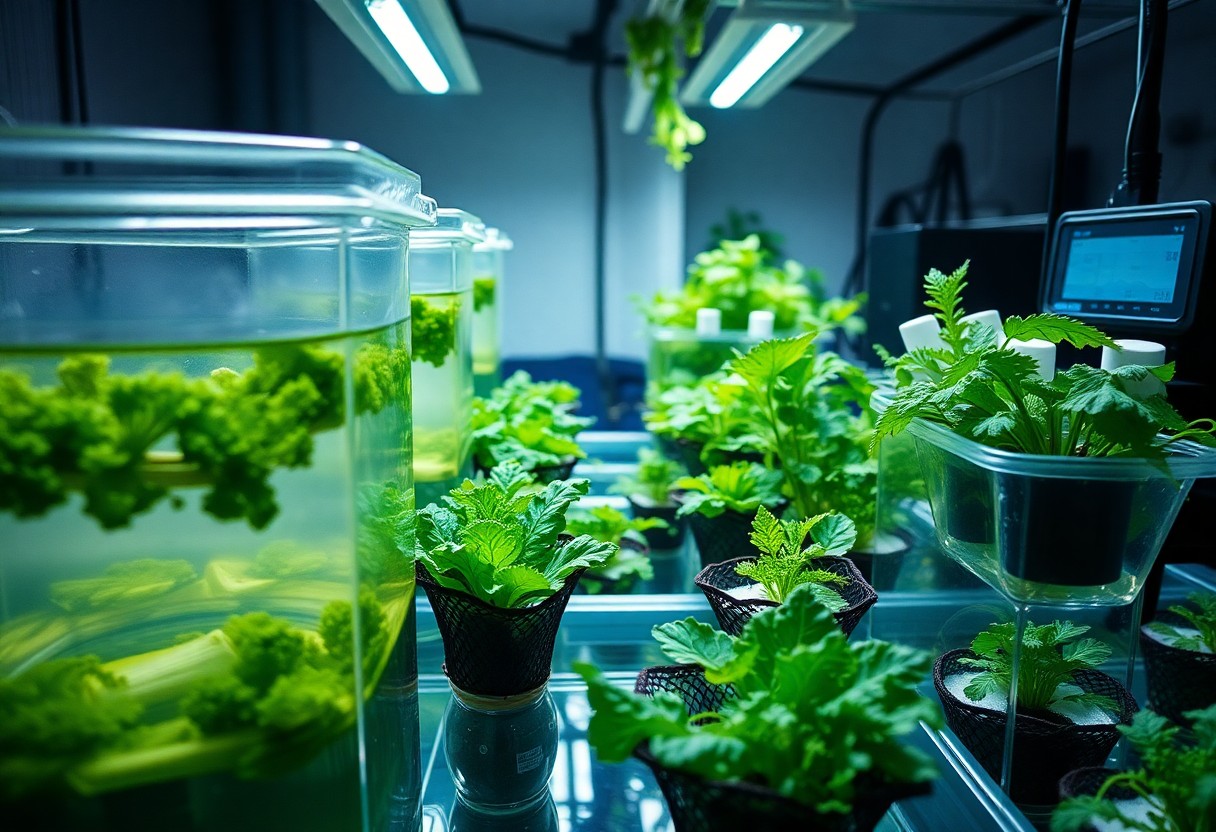
The Environmental Impact of Hydroponics
Sustainability in Urban Agriculture
Urban agriculture has seen a significant transformation with the implementation of hydroponic systems like Deep Water Culture. These systems drastically reduce the space needed for gardening, allowing even small urban dwellers to cultivate fresh produce. The sustainability factor of DWC lies in its capacity to recycle water, using up to 90% less water than traditional farming methods. This impact is vital as freshwater resources are becoming increasingly scarce, particularly in urban environments. A study by the United Nations indicates that about 55% of the world’s population lives in urban areas, making efficient food production within these environments important for future food security.
Community initiatives utilizing DWC also contribute positively towards local economies by decreasing dependency on transported goods. More people growing food locally means a reduction in carbon emissions from transportation, thereby further advancing the goals of sustainable living. Additionally, hydroponic systems can be set up indoors, allowing for year-round production, independent of seasonal cycles. This consistency aids in providing fresh produce to urban dwellers even during the harshest weather conditions.
Comparing DWC to Traditional Soil Cultivation
Deep Water Culture and traditional soil cultivation present distinct advantages and challenges. From a resource management perspective, DWC systems utilize fewer inputs such as fertilizers and pesticides due to the controlled environment. In contrast, traditional farming often relies on these chemicals extensively, leading to soil degradation over time. A comparative study by the Journal of Agricultural Science highlighted that hydroponics can produce yields up to 30% more than soil-grown crops in a fraction of the space, showcasing its potential for efficient food production.
Costs also differ substantially between these two cultivation methods. While initial setup costs for DWC can be higher, they often lead to lower operational costs over time. According to a report by the Food and Agriculture Organization (FAO), hydroponic systems can decrease labor costs by an estimated 25% compared to traditional farming due to reduced weeding, pest management, and harvesting labor. The choice between them hinges on specific goals and available resources.
| Factor | Deep Water Culture (DWC) |
| Water Usage | Uses up to 90% less water than traditional cultivation. |
| Space Efficiency | Requires significantly less space, ideal for urban settings. |
| Pesticide Need | Reduced need for pesticides due to controlled conditions. |
| Yield | Potentially yields 30% more crops compared to soil cultivation. |
Specific factors related to environmental sustainability also play a role in choosing between DWC and traditional farming. Soil cultivation inherently involves the risk of soil erosion and depletion, which hydroponics actively mitigates. The hydroponic approach not only preserves land for other uses but can also lead to more consistent quality in produce due to the lack of soil-borne diseases. Implementing DWC systems can create a positive feedback loop, encouraging sustainable practices through enhanced productivity, eco-friendliness, and reduced dependency on chemical inputs.
| Aspect | Deep Water Culture (DWC) |
| Carbon Footprint | Lower due to reduced transportation and chemical usage. |
| Land Use | Requires minimal land, freeing up space for other uses. |
| Waste Production | Waste is minimized through closed-loop systems. |
| Resource Usage | Highly efficient in using light, nutrients, and water. |
Final Words
Hence, Deep Water Culture Hydroponics offers an efficient and innovative approach to growing plants without the use of soil. With roots submerged in a nutrient-rich water solution, this method facilitates optimal growth conditions while minimizing potential issues such as pests and diseases typically associated with traditional gardening. Beginners can utilize this guide to understand the core principles and components of DWC systems, enabling them to set up their hydroponic gardens effectively. They will learn about the importance of oxygenation, nutrient management, and pH balance, ensuring their plants thrive in a supportive environment.
As a final point, those interested in hydroponics can find Deep Water Culture to be a rewarding and productive gardening method. By comprehensively understanding its mechanics and best practices, he or she can easily navigate the setup and maintenance of their system. As they become more familiar with this method, they will appreciate the advantages of growing plants in water, ultimately leading to a bountiful harvest and deeper satisfaction in their gardening journey.
FAQ
Q: What is Deep Water Culture Hydroponics?
A: Deep Water Culture (DWC) is a hydroponic growing method where plant roots are suspended in a nutrient-rich oxygenated water solution. This method allows plants to absorb nutrients directly from the water, promoting faster growth and higher yields compared to traditional soil gardening.
Q: How does a Deep Water Culture system work?
A: In a DWC system, plants are typically placed in net pots filled with a growing medium like clay pellets. The net pots are suspended above a reservoir filled with nutrient solution. An air pump and air stones are used to oxygenate the water, ensuring that the plant roots receive adequate oxygen while submerged in the nutrient solution.
Q: What are the benefits of using Deep Water Culture hydroponics?
A: The benefits of DWC include faster plant growth due to direct nutrient uptake, fewer pest issues since there’s no soil, efficient water usage, and easier temperature and nutrient control. This method is particularly well-suited for leafy greens and herbs.
Q: What plants are ideal for Deep Water Culture?
A: DWC is best suited for plants that have a quick growth cycle and shallow root systems. Popular choices include lettuce, basil, mint, and other leafy greens. While it is possible to grow larger plants, they often require additional support as they grow.
Q: What is the importance of oxygenation in Deep Water Culture?
A: Oxygenation is vital in DWC because plant roots need oxygen to thrive. Without adequate oxygen, roots can become waterlogged, leading to root rot and other health issues. The air pump and stones create bubbles that help dissolve oxygen in the water, ensuring that the roots receive the air they need.
Q: How often do I need to change the nutrient solution in a DWC system?
A: It is recommended to change the nutrient solution every 1-2 weeks, depending on the plant growth stage and the nutrient consumption rate. Regular checks should be made on the pH and nutrient levels to ensure they remain within the optimal range for plant growth.
Q: What are some common challenges faced when using Deep Water Culture Hydroponics?
A: Common challenges include maintaining proper water temperature (ideally between 65°F to 70°F), ensuring adequate oxygenation, managing nutrient imbalances, and monitoring for pests and diseases. Additionally, system maintenance is key to prevent failures such as pump breakdowns or air stone clogging.

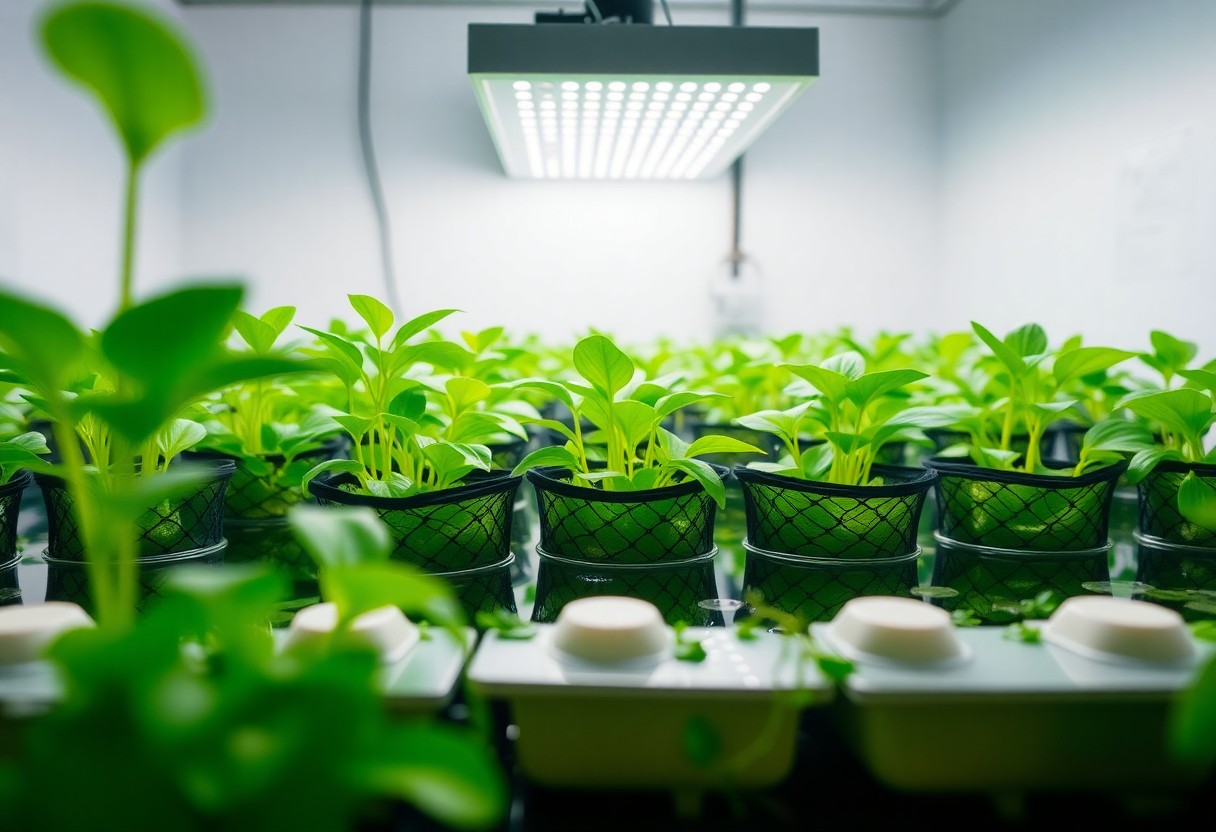

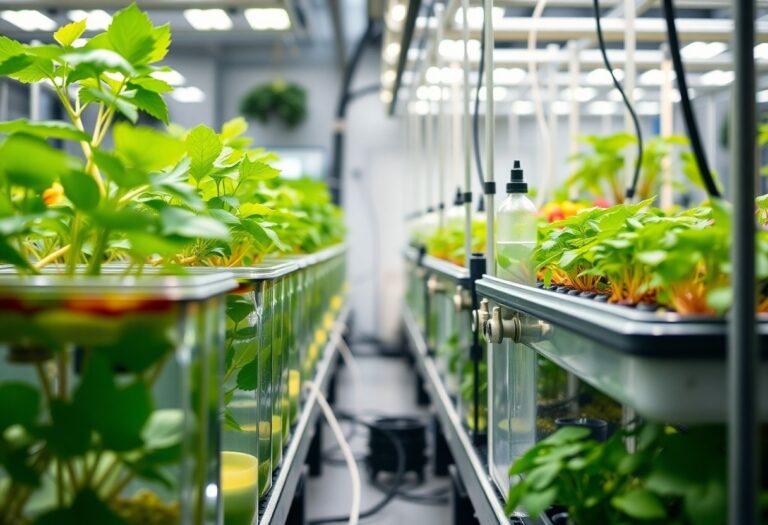
Leave a Comment